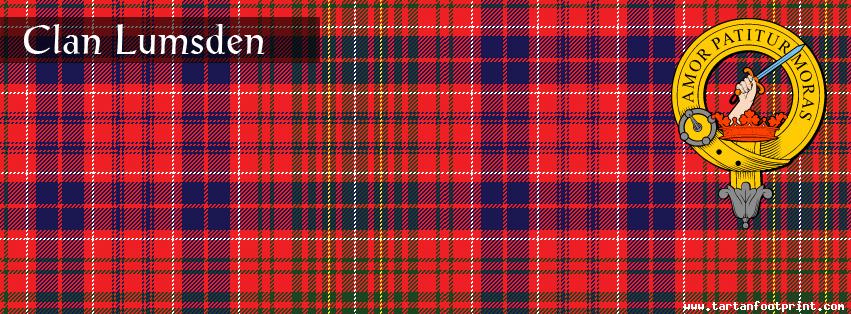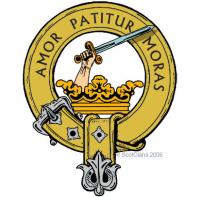
Clan Lumsden
Clan Lumsden People
 Lieutenant-General Sir Harry Burnett "Joe" Lumsden (1821 - 1896)
Lieutenant-General Sir Harry Burnett "Joe" Lumsden (1821 - 1896)
Lumsden was born aboard the East India Company’s ship Rose in the Bay of Bengal, the son of a British Army Colonel Thomas Lumsden, C.B. He was shipped to Scotland to study at age 6, and returned to India at age 16.
Lumsden joined the 59th Bengal Native Infantry in 1838, was present at the forcing of the Khyber Pass in 1842. He fought in the first and second Sikh Wars, being wounded at Sobraon. He became assistant to Sir Henry Lawrence at Lahore in 1846, he was appointed in 1847 to raise the Corps of Guides. The object of this corps, composed of horse cavalry and foot soldiers, was to provide trustworthy men to act as guides to troops in the field, and also to collect intelligence beyond as well as within the North-West frontier of India. The regiment was located at Mardan on the Peshawar border, and has become one of the most famous in. the Indian army. For the equipment of this corps, Lumsden originated the khaki uniform in 1848. In 1857 he was sent on a mission to Kandahar with his younger brother, Sir Peter Lumsden, in connection with the subsidy paid by the Indian government to the amir, and was in Afghanistan throughout the Mutiny. He took part in the Waziri Expedition of 1860, was in command of the Hyderabad Contingent from 1862, and left India in 1869. He became a lieutenant-general in 1875; that same year he retired and moved to Scotland where he spent the rest of his days.
Ernest Stephen Lumsden (1883 - 1948)
E.S. Lumsden studied at Reading Art School from 1889 under Frank Morley Fletcher and briefly at the Académie Julian in Paris in 1903. In 1908 he accepted an appointment at the Edinburgh College of Art, where he taught for a few years. He travelled several times to India between 1912 and 1927 and is noted for his prints of Varanasi (Benares) on the River Ganges. Between 1905 and 1946 E.S. Lumsden produced some 350 etchings many of which are represented in a collection held in the Burnaby Art Gallery, British Colombia, Canada.
Lumsden was elected an associate of the Royal Society of Painter-Etchers in 1909 and raised to the full membership in 1915; he was elected an Associate of the Royal Scottish Academy in 1923 and a full member in 1933; and he was President of the Society of Artist-Printers from 1929 to 1947.
In 1925 the publishers Seeley Service issued what is still regarded as the seminal treatise on the subject of etching, called The Art of Etching. In the book Lumsden describes the various techniques of intaglio printing using etching, drypoint, mezzotint and aquatint; he describes the history and development of etching through Rembrandt, Goya and the etching revival; and he reproduced personal, illustrated notes from several eminent etchers of the period on their techniques including: Marius Bauer, Frank Benson, Muirhead Bone, George Clausen, David Young Cameron, Frank Short, Augustus John, Frank Brangwyn, James McBey, Edmund Blampied, Percy Smith, Christopher Nevinson, Laura Knight, and John Everett. The book was published as a trade edition, which is still in print, and as a limited edition of 125 copies containing four original etchings by Lumsden.
In 1913 E.S. Lumsden married Mabel Allington Royds, a notable artist in woodcuts. They had a daughter.






